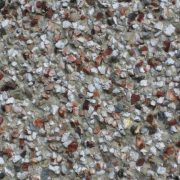Signs Your Wall Coatings Need Replacing
Wall coatings don’t last forever, especially if they weren’t of great quality to begin with. Over time, home exteriors can succumb to wear and tear caused by inclement weather. When your walls start looking a little worn, it’s worth considering a new type of coating for your property.
Our team have been helping homeowners keep their properties in prime condition for many years. During this time, we’ve developed a sixth sense for warning signs when it comes to exteriors. We’d like to share this information with you so you can change your wall coatings at the right time – with minimal complications. Here’s what you should look out for…
Peeling and cracking
When the property wall is coming away at various points, or you’re beginning to see some flaking, it’s time to get started on fitting a new wall coating ASAP. The sooner peeling and cracking is fixed, the better – it prevents further snags occurring later down the line.
Very occasionally, exteriors can begin to disintegrate due to foundational flaws that may need correcting. MK Rendering will be able to help you identify the cause (and provide an appropriate solution) after examining your property.
Fading colour
Over time, you may find that your wall coatings begin to look a little less lively than they once did. Fading colours and patterns have a habit of creeping up on homeowners, and it usually takes a neighbour or relative to point out the drained hues before you notice them. If your home is sporting a tired look, it’s time to replace the wall coatings. Our experts can restyle any property, installing a superb exterior that suits your tastes and needs.
A change in attitude
You should never have to settle for anything less than a property you’re truly proud of – and a handsome exterior can play a huge role in how good a place looks. If your home seems uninspired whenever you pull up on the driveway, it’s time to change the exterior.
Fix up your property for an affordable price with MK Rendering. We can replace dull wall coatings with fresh layers in a prompt, professional manner with minimal fuss.
Choose MK Rendering for wall coatings
MK Rendering provide the best house rendering services in the North of England, supplying a wide variety of wall coatings for all types of home exteriors – from pebble dashing to scratch render and spray render. Get in touch with our team today for more information on how we can refresh your wall coatings. You can reach us by phone on 0800 411 8675, or you can leave a message by sending an email to info@mkrendering.co.uk. Let’s get started on shaping up that exterior.

